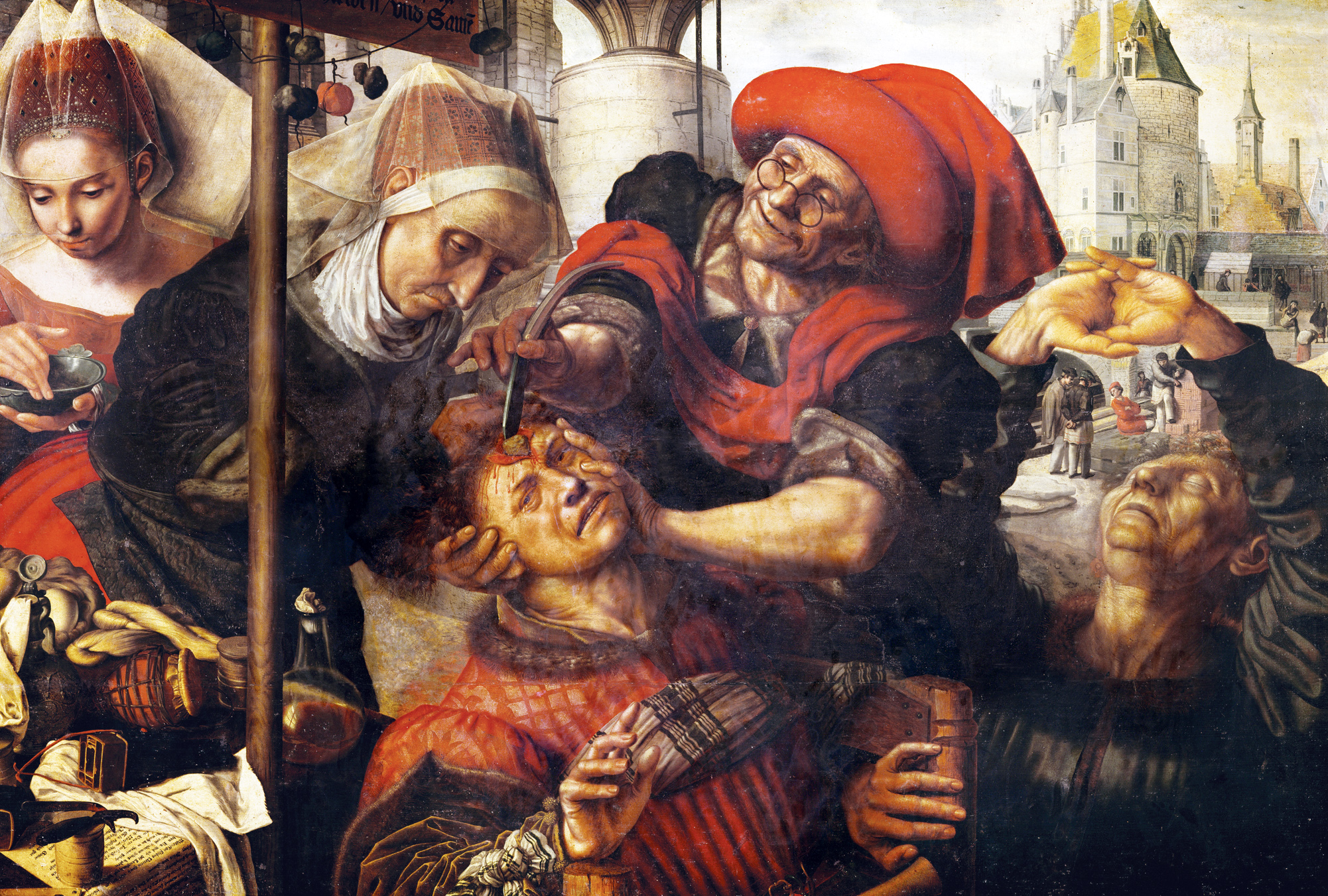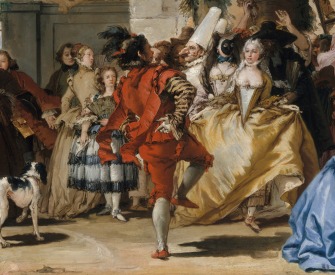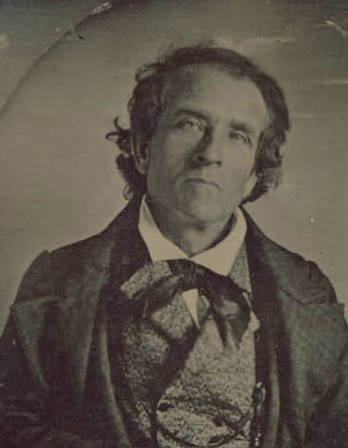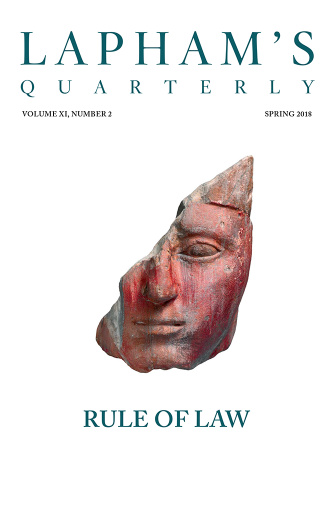To get back my youth I would do anything in the world, except take exercise, get up early, or be respectable.
—Oscar Wilde, 1891Dissection
Medical students are forced to change their perceptions of the dead. There is a human instinct that must be overcome to stick knives and fingers into human flesh.
By Meehan Crist

Anatomy of the heart; And she had a heart!; Autopsy, by Enrique Simonet, 1890. Museum of Málaga, Málaga, Spain.
The face lies exposed under fluorescent lights as expert hands place the edge of a serrated blade against its forehead. (Do they call it forehead in the dissection lab? The word is too familiar, too human. In the lab, body becomes cadaver. And yet the students assign names: Eve, Johnny, Marco. The dead are stripped of identity somewhere between donation and distribution, then given new identities over the course of a semester of cutting. There is intimacy in dissection.) The cadaver rocks back and forth on the table. The sound of metal against bone. Dust flying.
The cadaver is turned over to reveal the back of the head so the blade can continue the cut, like a kitchen knife working around the pit of a stubborn avocado. The face is pressed against the table (oh god, the nose!) as the white-coated professor leans his weight into the work. It’s not easy to saw through bone, even the few millimeters of the human skull.
I hold my breath as the top of the skull is removed. Skullcap comes to mind. The spinal cord is snipped and gloved hands reach in to grasp the wrinkled gray meat of the brain.
I long to hold a human brain in my hands, to know the weight of it. For years I have studied the organ at a remove: in theory, drawing, and photograph. It started with popular-science books and glossy magazine articles, which led to the more rarefied world of scientific papers and journals, dense texts not meant for communication of ideas so much as proclamation of data, littered nonetheless with an accidental poetry that is perhaps inescapable when the subject matter is the meat of the human mind. I started going to conferences and filling notebooks. I visited research labs where eager graduate students slid subjects into million-dollar scanners that boomed and clanged like garbage-can marching bands while rendering technicolor images of neural activity. Curiosity long ago gave way to obsession. But the physical object of the brain itself remains elusive. None of this is easy to explain, but among the forms on the stainless-steel dissection tables, white sheets tracing the profiles beneath, no one asks me why I’ve come.
“These are all anonymous donors, mostly from Westchester,” says the lab manager. It is late on a Monday night, and the only other person in the room is a diligent medical student, hunched over the homework of an exposed foot. Leathered skin has been peeled back to reveal a tangle of tendons and arteries. The rest of the cadaver is hidden under the drape of white sheet. As a rule, only the necessary parts are uncovered at any given time. They do the head last, because by then students will have become more familiar with their materials, and the face will be less alarming. “They used to come from the public morgue, Bellevue, but that’s all different now.”
Before the poor and the insane, there were the poor and the criminal. In the 1700s, those condemned for murder were regularly given sentences of death and dissection, whisked away after execution like so much rotting gold to anatomists willing to pay for raw materials. No preservatives. No fixatives. They had to work fast. But why wait for fresh bodies when you can make them appear at will? After a particularly grisly case revealed that one string of Scottish homicide victims had been surreptitiously spirited directly from crime scene to dissection table, Parliament passed the Anatomy Act, which expanded anatomists’ potential pool of cadavers beyond executed killers. There were other attempts at regulation in countries where the practice was legal, but demand moves the market more readily than the law. The courts could not provide the growing number of medical schools with the growing number of bodies they needed, so well into the 1800s grave robbers, known as “resurrectionists,” thrived on the demand for fresh corpses. These were thieves skilled with shovel and rope, who could fish a body from a fresh grave, strip it, and stuff it into a sack for delivery within hours at medical school backdoors. Across Europe and America, anxious families watched over the bodies of loved ones after they died. They fortified graves with iron bars.
Today’s medical students deconstruct the bodies of innocents: electricians and painters, accountants and teachers. Often doctors. At the turn of the twentieth century, doctors were frequent donors because they knew the problems of shortage firsthand; they urged their students to donate as well, for the good of those who would someday stand at the same tables, books open and scalpels poised. Doctors are still more likely than others to donate their bodies for medical dissection, perhaps because their own schooling has impressed the need upon them, in spite of the violence the lab can do.
But why think of it as violence? Doctors-in-training need to become familiar with the material of their art. Moving along the silent rows, I ask myself if I would give my body to medical dissection. My driver’s license attests willingness to offer parts of me: heart and liver and lungs. Why not all of me? There is value in the act. Being gone in death, why should I care what happens to what is left behind? Being here, I can no longer put the question aside. There is a shortage of cadavers in this part of the country, I’m told. Medical schools are barely making do.
Some schools in the U.S., even those that receive plenty of donations, are turning to high-tech virtual dissections that could make the process of placing apprentice hands into human flesh obsolete. (But it’s just not the same, some argue.) Other institutions, such as Yale Medical School, have gone in the opposite direction. They have turned away from the impersonal approach and instituted programs of rehumanization. Know your donor’s history. Meet their family. Wrestle with the moral implications of your work in groups of fellow students. (Too touchy-feely, some argue.) Whatever the future of dissection, the present in this lab is still defined by a familiar shortage. There are simply not enough bodies to go around.
I ask how many donations the lab gets, on average. “Anywhere from one per month to thirty or forty for the year. We’re counting on the cold season. The holidays.”
Over there a lawyer, perhaps. Over here a housewife. A retired professor. An alcoholic. A grandmother. They are none of these things now. They are bone and muscle and tissue. They are bubbling yellow fat that must be scraped away to reveal internal structures.
At the far end of the room is a collection of plastic tubs, like the glass jars you’d find holding combs in a barber shop but holding dissected brain parts for next week’s neuro-anatomy class. They are labeled with the names of structures: thalamus, vascular system, brainstems. There is comfort in naming the parts of a whole, because the function of the parts can help explain the function of the whole. There, you can say. That’s what it’s called. That’s why it happens. Once you can name a thing, you can call it into your mind at will, turn it around, flip it onto its back. There is power in this. Western science is built on a tradition of great appetite for power, and I am undoubtedly a product of this tradition.
The earliest lesson in dissection comes not from the West but from the East, in the pages of the Sushruta Samhita, an ancient Sanskrit text meant for students of the surgical arts who probably lived about six hundred years before Christ walked the streets of Galilee. It instructs its readers to find the body of a person—not too young and not too old—who has not died of poisoning or severe disease. Remove the intestines. Wrap the body in grass, hemp, or bast, the inner bark of trees. Place the wrapped figure in a cage, for protection from animals, and lower the cage into a river with a gentle current. Leave it there, bobbing in the rhythmic rush of water, “the body left to soften.” When you return a few days later, bring a brush made of grassroots, hair, and bamboo. Use the brush to remove one softened layer of the corpse at a time. “When this is done, the eye can observe every large or small, outer or inner part of the body, beginning with the skin, as each part is laid bare by the brushing.” In this way, you will travel beneath the skin and through the body to the very core, whisking away bits of bloated flesh until nothing is left, the body disappeared and your hands, empty.
Wearing a pair of blue surgical gloves, I head for the closest tub and pull the lid off, peering down through a noxious burst of organic decay and chemical fixative. It smells like a refrigerator that held rotting chicken a bit too long before being scrubbed with heavy solvents. Inside the opened mouth of the tub, the surface of a yellowish liquid is broken by the warp and wend of cortical ridges, the rest of the cerebrum obscured beneath. I reach in, the chemical cocktail creating warm suction against the skin of my gloves. The brain is more solid than I expected, heavy and plantlike, but at the same time more delicate. I am afraid that if I hold it wrong something will fall unsupported out of place. I use both hands, moving gingerly.
Here’s the truth: when I saw the serrated blade working into the dead man’s forehead, something in me rebelled. It looked wrong. To saw into a human head goes against an instinct buried so deep I hadn’t even known it was there. No wonder medical students are taught to think cadaver instead of body. They could not do their work otherwise. There is judgment that must be overcome to stick knives and fingers into human flesh.
Sometimes we have had the stomach for it, other times not. The ancient Chinese did not perform human dissections, as the worship of ancestors did not allow for mutilation of the body. The Greeks were more willing, but only for a time. Erasistratus of Alexandria. Herophilus, father of anatomy. I would like to have seen their public demonstrations when the ban on dissections was briefly lifted, to watch Herophilus peel back the layers of membrane enclosing the brain: tough husk of the dura, clinging web of the arachnid, jellyfish ooze of the pia. He might have lingered there at the exposed cerebrum, convinced as he was that it sat at the center of the nervous system. But there are horrible rumors. I could never have stomached an anatomist’s blade plunging greedily into a person bound hand-and-foot and still very much alive.

The Surgeon, or Cure of Folly, by Jan Sanders van Hemessen, c. 1555. Prado Museum, Madrid, Spain.
Vivisection and dissection were easier with other animals, the instinct to draw back less finely developed. Sheep, pigs, cats. They all went under the blades of early anatomists. Galen, the Greek physician and philosopher who lived in the second century and whose ideas long served as medical dogma, did not explore the human body with knife in hand. He preferred the bodies of other animals, content to make discovery through analogy. Galen observed a curious web of blood vessels at the base of an ox’s brain and argued this rete mirabile—oh wonderful net if such a thing existed!—was the physical structure that changed the heart’s “vital spirits” into the “animal spirits” of the mind. Only during the 1500s, when anatomists such as Andreas Vesalius finally turned back to the human body, putting aside for a moment the sheep and cats and pigs, did scientific understanding of the brain begin again to evolve. There was no such net of tissue to be observed at the base of the human organ. Another explanation would have to be found for the mysteries Galen had tried so hard to solve; it would require closer observations, further dissections, and more bodies. It would require cultures to make peace with the process, or look away.
What did the English physician William Harvey have to overcome in order to dissect the bodies of his own father and sister? Harvey became famous for his descriptions of the circulatory system just sixty-four years after Vesalius’ death, anatomical knowledge he could not have unearthed without the help of the cadavers he found so loathsome, and yet so practical. But his own father? His sister? What cultural and religious pressures did he have to resist as he cut into that familiar flesh? What personal demons did he have to keep at bay?
It seems unscientific to think of the body in terms of the sacred, but perhaps for me the associations are unavoidable, the idea of soul woven into the fabric of my mind, into neural patterns strengthened by years of mass and Sunday school. The flesh of a crucified man hung over us, fed to us. Stories told over and over: “Before the cock crow, thou shalt deny me thrice.” They did not teach us about Hebbian learning: connections between neurons made strong by the power of repetition. So I am left, years after I stopped going into churches with anything other than aesthetic interest, with the feeling that the body is a vessel, and that to use the body otherwise is somehow sacrilege.
And yet, how easy it was to let reverence make way for curiosity.
Before reaching into the bucket, I thought: by coming to know the brain as the object itself, by holding this mass of tissue normally secreted away in the skull and relegated to the realm of metaphor, my hands will teach me what my mind cannot grab hold of on its own.
And what was it my mind was reaching for?
With the brain in my hands, I am unsure of what is allowed, of where to strike the balance between veneration and curiosity. Fixative drips between my fingers. Out of the jar and up close, I can see that about a quarter of the organ’s left hemisphere has been cut away to reveal internal structures. There is the soft curve of the corpus callosum, the elegant C-shaped band which connects the hemispheres and enables the divided halves to function as a whole. The corpus callosum is larger than I had imagined, sleek and rubbery, like—I cringe at the comparison that pops unbidden to mind—calamari. Actually, the whole brain is a bit like an oblong lump of squid. I become bolder. Poke my finger into a hollow ventricle, one of the cavities where Descartes erroneously placed the spirits of the mind. Watch it disappear up to the knuckle.
Two days after I visit the dissection lab, my father flies into New York for business and I meet him in a restaurant, tables pressed up against each other so you have to work not to hear what your neighbors are saying. His eyes are blue against the backdrop of dark wood and nostalgic coffee posters. He looks so proud when all I’m doing is ordering a drink.
I lean forward and talk earnestly to my father of subjective consciousness. He says he likes to think of life in a Kurosawa sort of way, everyone with their own versions of what happens. “Maybe 90 percent, maybe 50 percent, or maybe if you’re Charles Manson only 10 percent matches up to how other people perceive things.” Yes, I say, I agree, but I can’t help hammering on about the brain itself. His eyebrows pinch together as he listens. When he has listened long enough, he says quietly, “I worry about reducing people to neurons firing.” He disapproves of giving in to scientists with brain maps and color-coded theories. “We are more than that.” My father knows it. He feels it. Oh yes, I say. I hadn’t forgotten that. The mystery. No, the scientists don’t have me fooled. But my insistence comes a little too late. I envy his confidence. When I am with him, I can almost share it.
No one has been able to bridge the gap between the material of the brain and our experience of being alive. How is light of a certain wavelength hitting the retina entangled with the subjective experience of the color blue?
But perhaps there is no gap at all, just an illusion created by the craning of the neck as we try to look back at ourselves.
As I left the lab that evening and crossed the parking lot, I felt exposed as a clamoring parliament of sensation, nothing to hold the chorus of voices in unison. I felt myself to be the synthesis of cold city air stinging cheeks and a coat flapping against thighs and the sound of an ambulance siren wailing past ears and auditory cortex. Light bounced off mounds of dirty snow and entered retina; chemical signals passed back to neurons firing at each other in the dark. It left me with a sense of vertigo. I had to squeeze my eyes shut and breathe, trying not to think of the mechanical action of diaphragm dropping and lungs expanding to catch the air.
I’d seen the brain, naked of skull and skin and face. I couldn’t help staring into the eyes of the few students rushing across the parking lot toward evening courses, not looking for any window into the soul, but looking because the glassy mush of each eyeball was just inches away from the gray matter beyond; there’s no bone between the outside world and the brain there, just two egg-shaped holes. I could curve my finger around an eye socket and pop the eyeball out of the way, reach in.
I have seen other people’s bodies, naked and browned like turkeys with limbs flayed open into lacework. I’ve held someone’s brain—someone’s mother or brother or daughter—in my hands.
I think often about doctors-in-training peeling back skin and rooting through webs of veins and arteries, networks of tendon and muscle, scraping away bubbling yellow fat to uncover the crucial bits they need to memorize for the test at the end of the semester, during which, cadavers will be placed around the room and stuck with pins in areas which the students, clipboards and pens in hand, will have to lean close and identify, as if by naming they can claim understanding.




